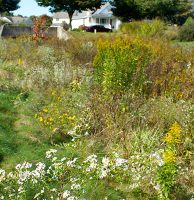
Addressing Stormwater Management Requirements in MS4 Communities
To Manage Stormwater Runoff, Don’t Forget to Look in the Mirror
A lot of the work of stormwater management for a permitted Municipal Separate Storm Sewer System (MS4) community deals with education and outreach to the public, developers, the construction industry, and others who may have an impact on runoff into nearby streams and rivers. However, an MS4 community needs to also look at their own practices and examine what could be done to reduce their impacts on local water quality in order to meet all requirements of their permit and their Stormwater Management Program (SWMP). This is what makes up Minimum Control Measure (MCM) 6 – Pollution Prevention/Good Housekeeping and is what we will delve into in this article.
Why Are These Actions Necessary?
The Environmental Protection Agency (EPA) and Pennsylvania Department of Environmental Protection (DEP) want MS4 communities to “examine and subsequently alter their own actions to help ensure a reduction in the amount and type of pollution that: (1) collects on streets, parking lots, open spaces, and storage and vehicle maintenance areas and is discharged into local waterways; and (2) results from actions such as environmentally damaging land development and flood management practices or poor maintenance of storm sewer systems.”
MS4 communities can be role models for other land owners/managers in the municipality, making sure that their actions do not negatively impact local water quality. It’s easier to work with a potential stormwater polluter when you are not one yourself!
What Are the Requirements of MCM 6?
As part of an MS4 community’s permit the following are requirements:
- Develop and implement an operations and maintenance program (O&M) to prevent or reduce polluted runoff from the community’s operations into the storm sewer.
- Train municipal employees on how to incorporate pollution prevention/good housekeeping practices into their operations (i.e. park maintenance, vehicle and building maintenance, construction, etc.) using existing training materials from the EPA, DEP, or other approved organization.
- Determine the best management practices (BMPs) that will work best to develop measureable goals, which will be described in more detail below.
What BMPs Are Available?
There are many tools and techniques an MS4 community can use to reduce their impact on stormwater runoff and pollution. For instance, you can look for structural controls (such as grates on outfalls) and non-structural controls (such as educational campaigns) to reduce trash, pollutants, and other debris from getting into the storm sewer system and eventually into local waterways. However, structural controls will require routine maintenance to ensure proper function. Examples of techniques include reducing the amount of herbicides used to control vegetation in parks and roadsides, creating signage and educational programs to promote recycling and reduce/eliminate littering, and keeping municipal parking lots clean and free from trash, oil, and other detritus.
To develop your measurable goals for the O&M program, take a look at the EPA’s Measurable Goals Guidance for Phase II MS4s that can be found here.
Final Thoughts
The MCM 6 requirements of an MS4 permit ensure that a municipality is doing all that it can to reduce the impact of its operations on stormwater and local water quality while also serving as a good example for other community members to follow. And in the end, by changing the way your MS4 community deals with stormwater there may be cost savings found through the timely maintenance of the storm sewer system, which will avoid repair costs that can arise from neglect.


